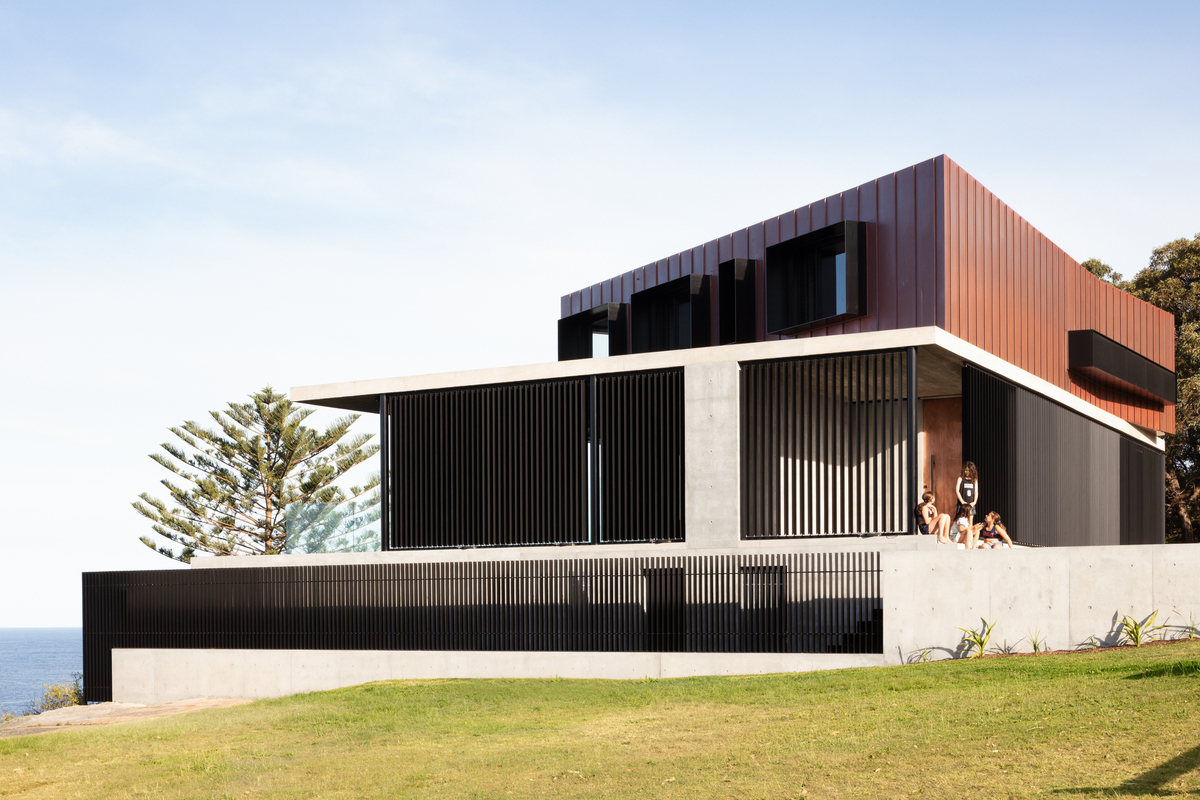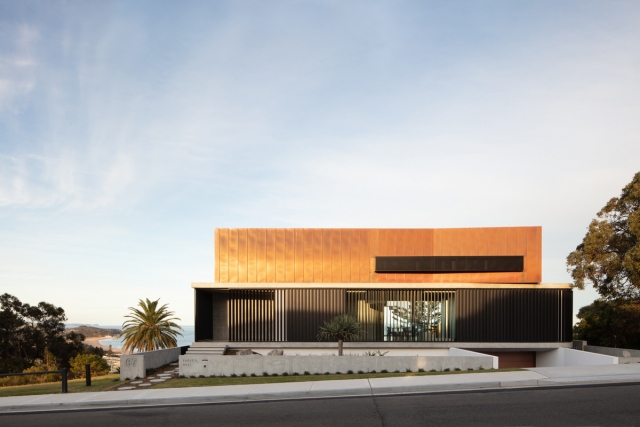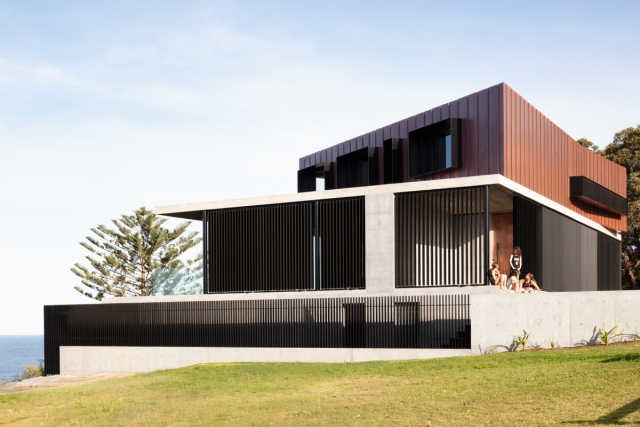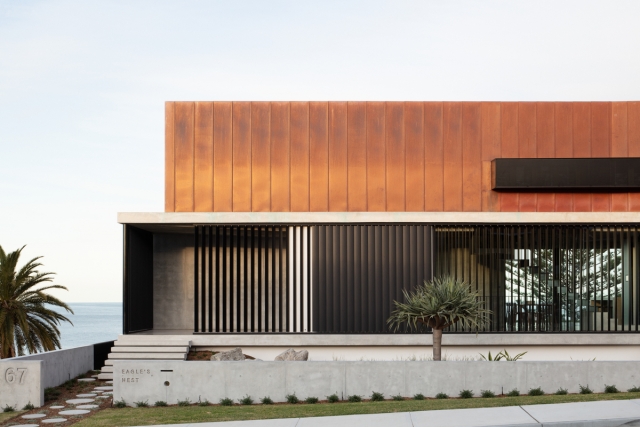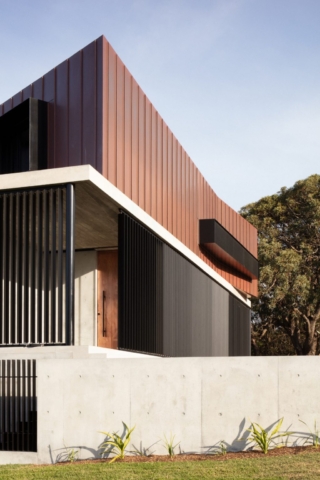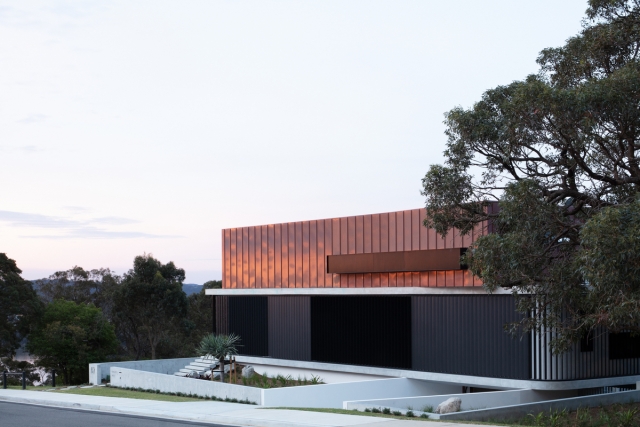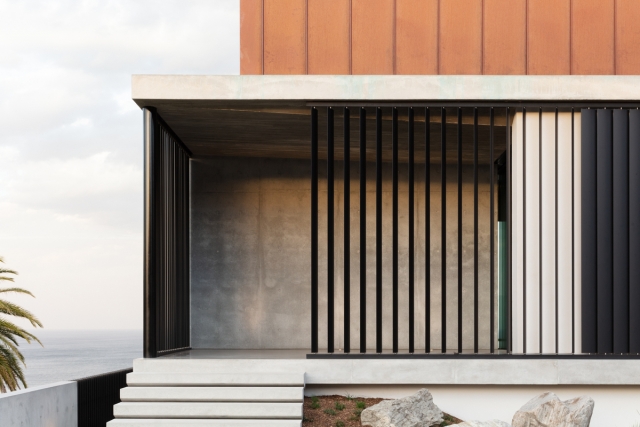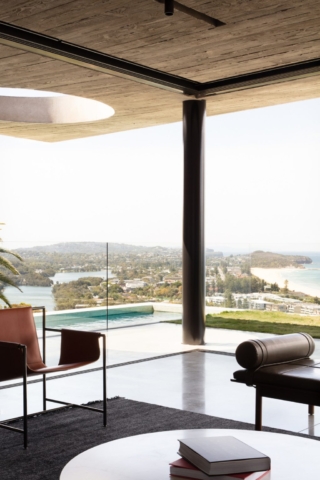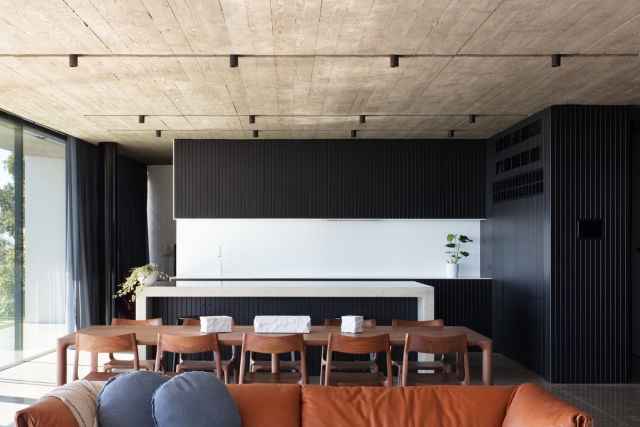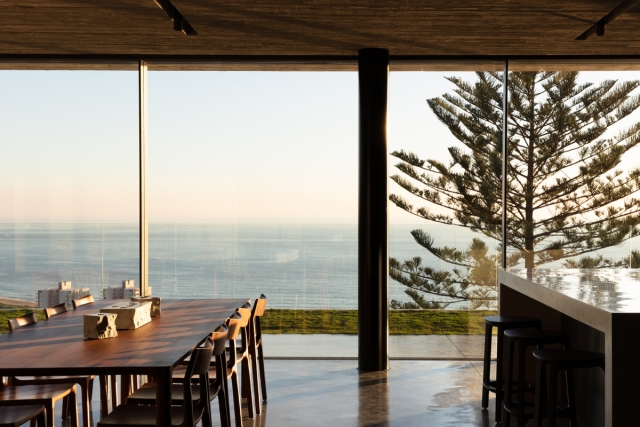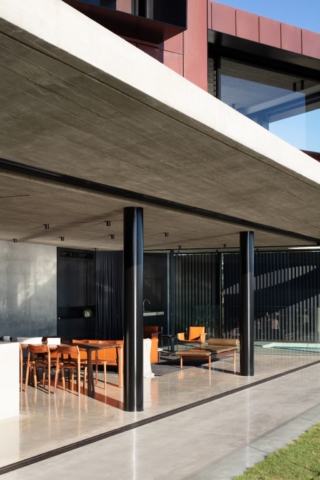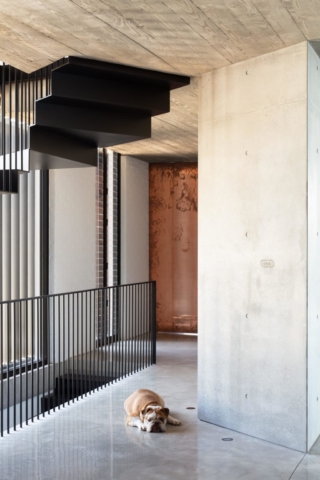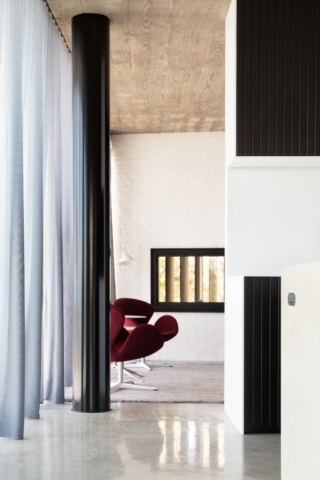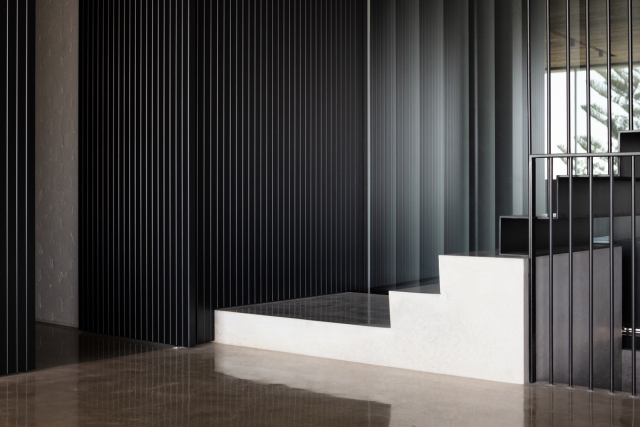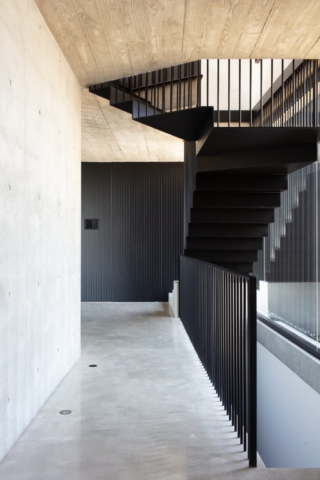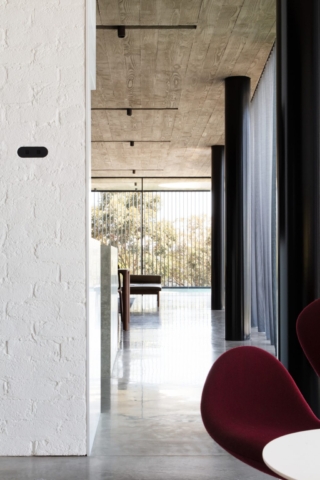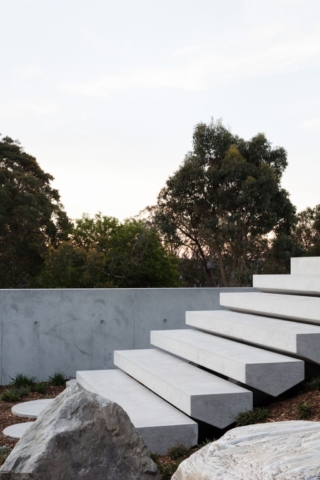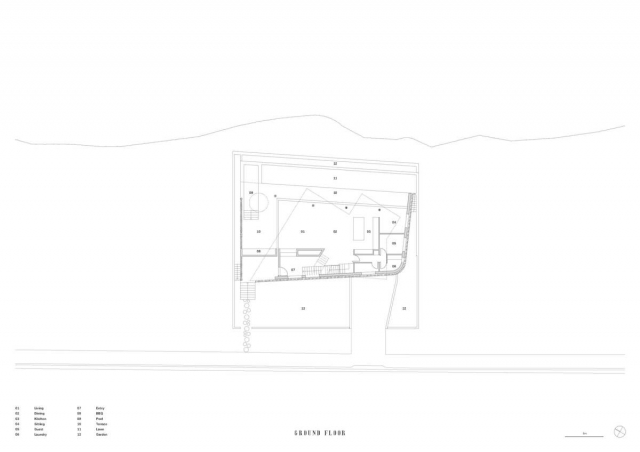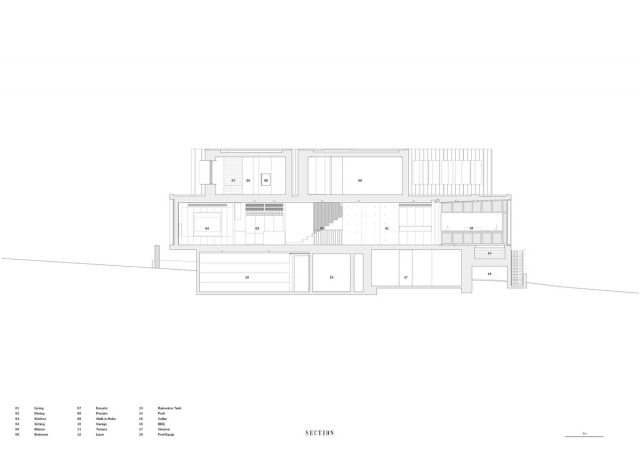Perched high on a prominent escarpment, Eagle’s Nest aspires to balance and curate the experience of outlook and expansiveness of site, with privacy and seclusion.
Ian Bennett Design Studio used a restrained material palette that heightens the experience of site, landscape, and built form along with the changing dynamic of light and shade.
Influenced by contemporary Brazilian Modernism, the ground floor’s “public program” (living, dining, kitchen) is enclosed by large glass sliding doors to the north and east, enabling uninhibited 135-degree views of the Pacific Ocean, Pittwater, Narrabeen Lake, and Bilgola Plateau.
Retracting the doors provides the coveted internal / external living that Sydney’s climate enjoys year-round.
In contrast to the ground floor’s open and expansive view, the first floor (housing the private program of bedrooms) seeks to frame select views from each space in a more intimate approach, subconsciously inviting one to look further into the view, akin to a painting of a landscape.
Capturing views whilst maintaining privacy was of paramount importance for a site flanked with pubic land and fronted with both a busy pedestrian walkway and vehicular thoroughfare.
The solution came in the form of an operable louvre skin that allows the occupants to mediate privacy and solar access along three facades.
The appearance of the building transforms both internally and externally depending on the openness of the louvres, engaging both occupant and passer by alike.
The Ian Bennett Design team worked closely in design development with the owner, builder, bushfire consultant, and structural engineer.
Their collective input informed the design and ensured that all bushfire systems were integrated and concealed, rather than as an after-thought and visible.
Utilising proprietary bushfire products and detailing around their requirements allowed for a seamless resolution that was also cost effective.
Compliance with Flame Zone also informed the construction and materiality of Eagle’s Nest.
Utilising the client’s expertise with off form concrete allowed the floors, walls, and soffits to be one material with three different textures; burnished floor, sheet form walls, and board form soffits – all requiring no future maintenance whilst providing a disparate background for light and shade to interact.
To contrast the expanse of concrete, rough laid recycled brickwork (recycled from the demolition of the existing house) painted satin white, provides a subtle backdrop for the matt black flat plate steel origami staircase that suspends down from the first floor.
Externally, a weathered copper box sits atop the concrete structure and angles due north for optimum solar access with extruded black steel boxes framing views and providing protection to the first floor windows from the harsh escarpment environment.
Eagle’s Nest seeks to do justice to an amazing site on the Northern Beaches of Sydney, curating breathtaking views within a private built form utilising a restrained material palette and detailing to achieve the highest level of bushfire compliance, all with an uncompromised aesthetic.
Project Details
Project size – 500 m2
Site area – 544 m2
Building levels – 3
Completion date – 2019
Project Team
Architecture and Interior Design
Ian Bennett Design Studio
Ian Bennett Design Studio was established in 2014 and is located in Newport Beach on Sydney’s Northern Beaches.
The Studio is a multi-disciplinary design studio specialising in high-end residential design that is characterised by bold, low maintenance, robust , and pure built forms that are highly considered internally and externally.
The Studio is a full service practice taking projects from inception to construction completion.
Photography
Clinton Weaver
Clinton is a commercial photographer based in Sydney. He specialises in architecture and interiors photography.
Photo Gallery
Click on a thumbnail image to enlarge.
Design © 2020 Ian Bennett Design Studio. All Rights Reserved.| Images © 2020 Clinton Weaver. All Rights Reserved.
Get the Builtworks Letter
In every edition of the Builtworks Letter, you’ll get the behind-the-scenes backstory as to how buildings are designed, built, and brought to life.
You’ll hear compelling stories, learn surprising ideas, meet engaging characters, and discover unique voices.

